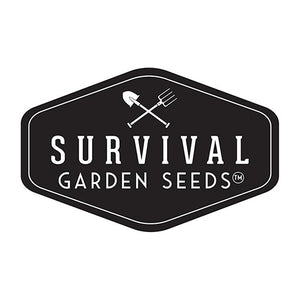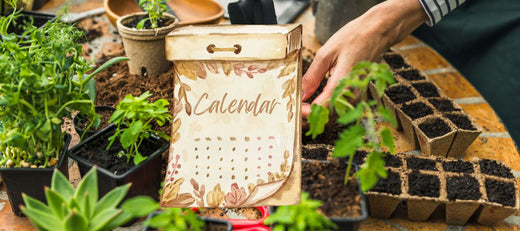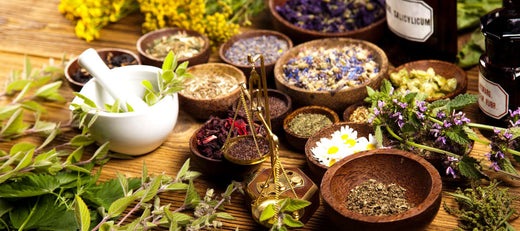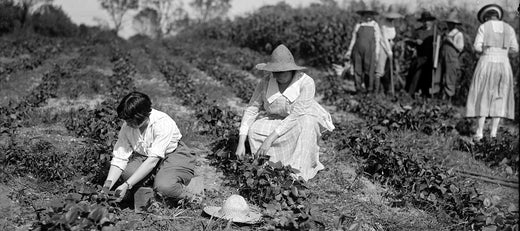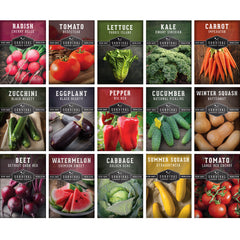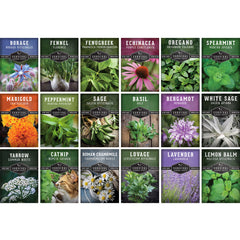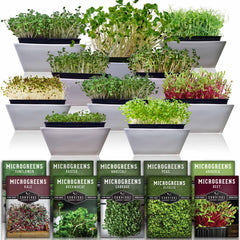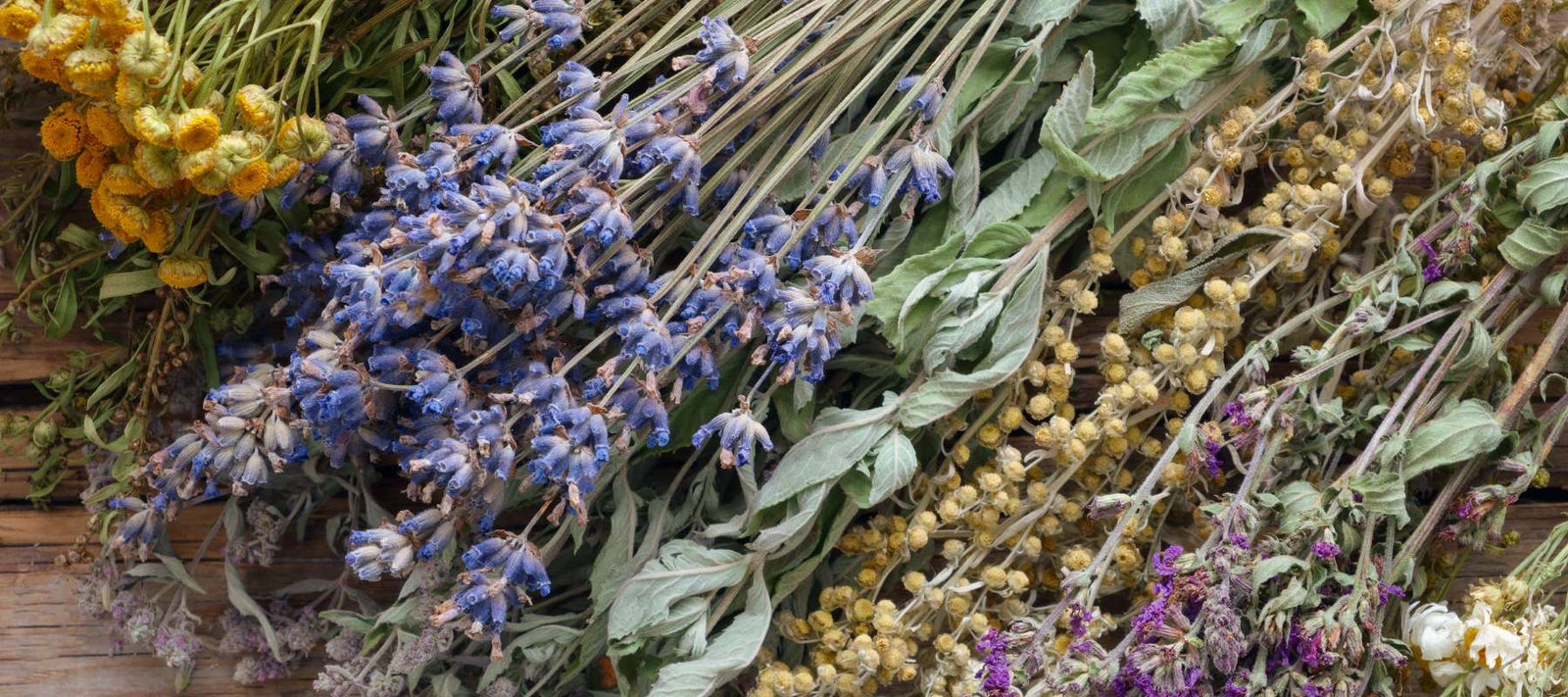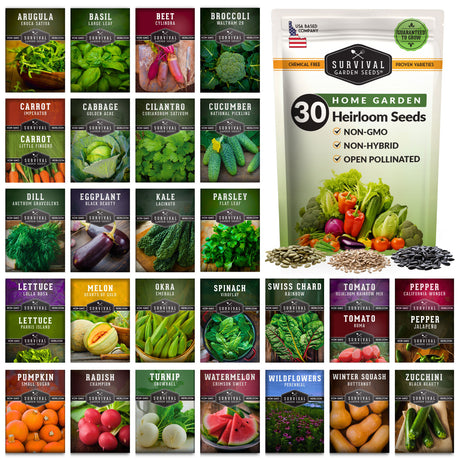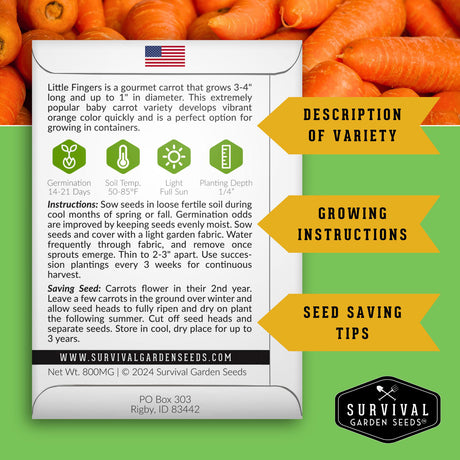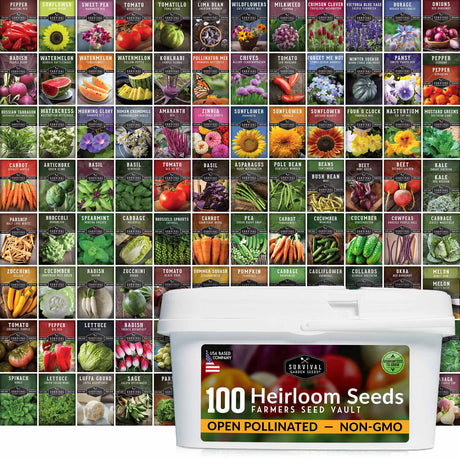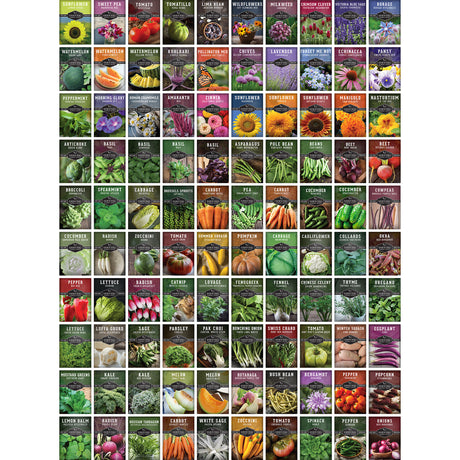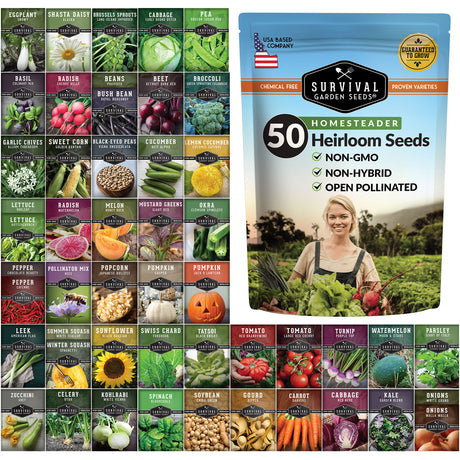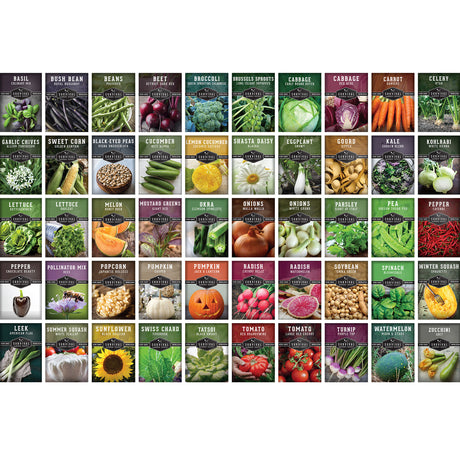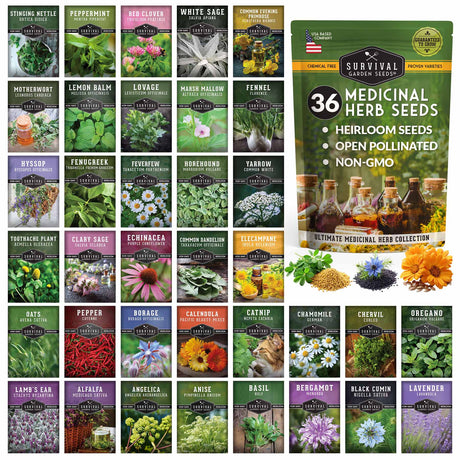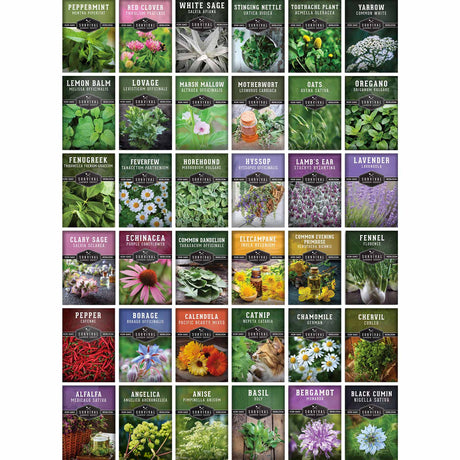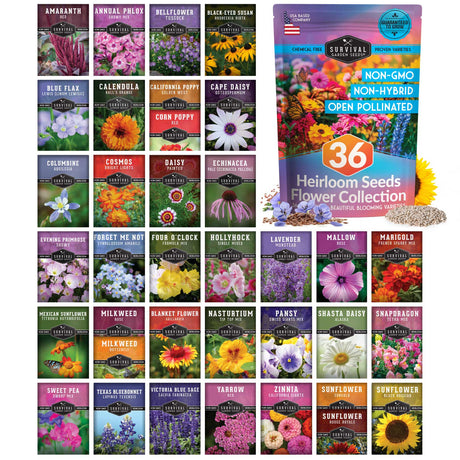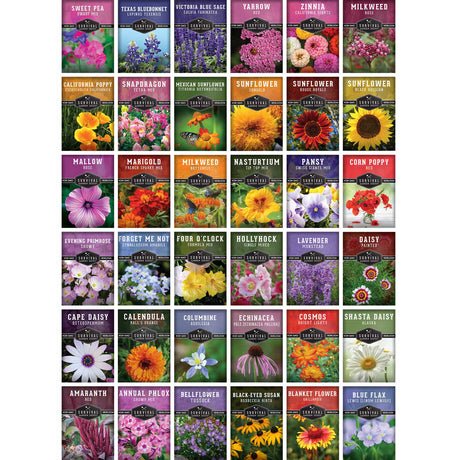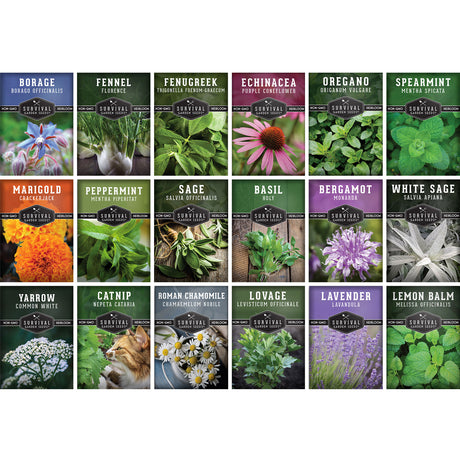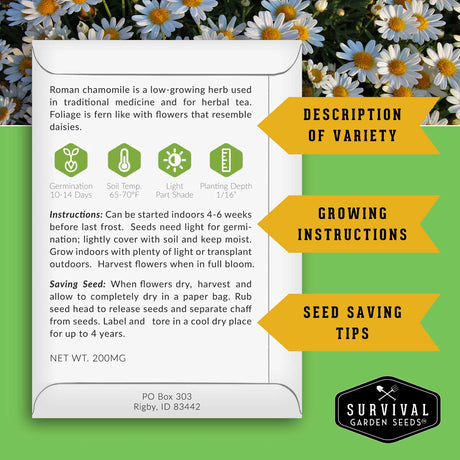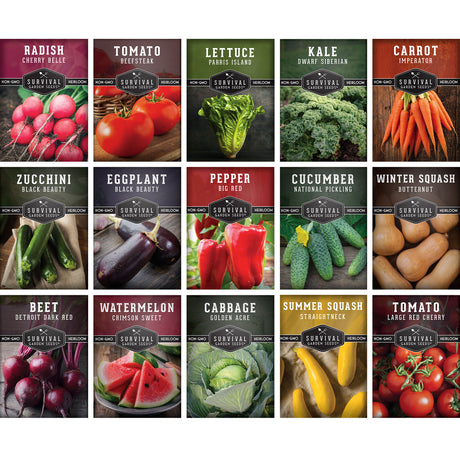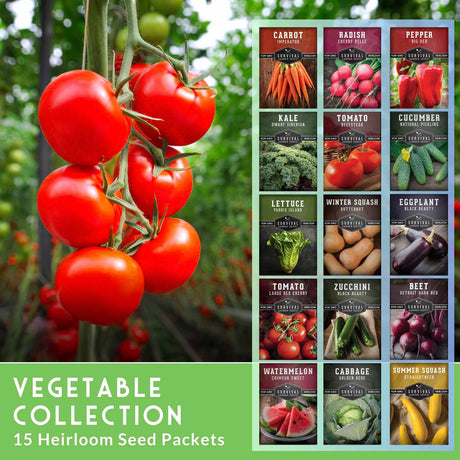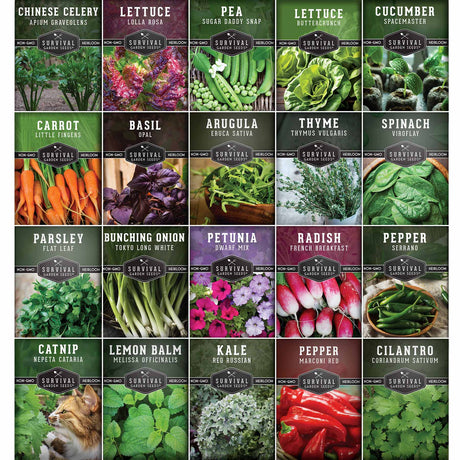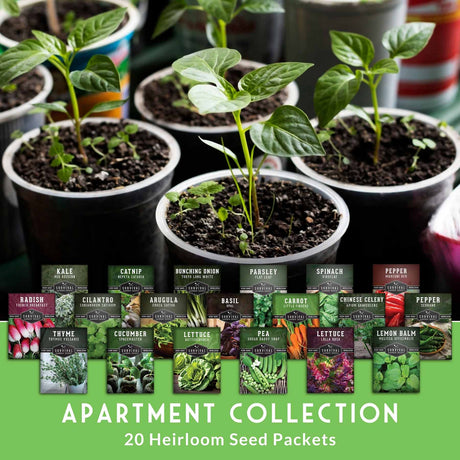Planting your own home apothecary is a fun way to transform balconies, kitchens, and backyards into living wellness cabinets. The foliage, flowers, and roots of time-honored medicinal plants can soothe everyday ailments, add some flavor and health benefits to your dishes, and offer a deeply rewarding connection to the natural world. By nurturing these herbs from seed or cuttings, you'll have access to fresher, more potent remedies without the expense and ecological toll of store-bought supplements. The following guide explores how to start, which healing plants to prioritize, and how to tend, harvest, and store each botanical treasure for year-round benefit.
Why Grow Healing Herbs at Home?
If you grow your own medicinal herbs, you don't have to worry about getting them from outside sources or relying on big companies that might sell you a product that isn't pure. When you grow them yourself, you know exactly how every leaf was grown, picked, and handled, so you can be sure they're super effective and clean.

A personal herb garden is a step towards sustainable self-sufficiency. When you harvest fresh leaves, you skip the plastic packaging and shipping footprint. Perennial plantings even can offset carbon and support pollinators. Even if you live in the city, indoor pots and balcony boxes are a step to a greener world.
Growing herbs is also a valuable education. Watching the plants sprout, grow, and flower allows you to learn more about the plants, so you can make your own remedies with more confidence. This hands-on learning makes you appreciate old traditions more and gives families the power to deal with small health issues naturally.
Getting Started: Planning and Planting Your Healing Herb Garden
A little planning goes a long way in your garden, helping you avoid common snags like plants getting too crowded, not enough nutrients, or bad lighting. Even if you're new to this, a bit of foresight means you'll grow strong, potent plants.
Think about your climate, available space, and what you want to achieve for your health when planning your garden. Mediterranean perennials like rosemary and sage favor hot, dry sites, but moist-loving lemon balm and peppermint perform best in partial shade in the heat of summer. Right plant, right place means matching your plants to the right environment. This will ensure healthier plants and higher concentrations of their therapeutic compounds.
Choosing the Right Location
Most medicinal herbs thrive with six or more hours of direct sunlight. South-facing windows, patios, and raised beds provide the necessary exposure for essential oil production. In hotter regions, afternoon shade prevents wilting and volatilization of delicate aromatic compounds.

Accessibility is equally important. Place pots near the kitchen or along a daily walkway to encourage frequent pinching, prompt pest detection, and effortless harvesting. Herbs harvested regularly and properly have healthier, bushier growth and superior flavor.
Selecting Containers vs. Garden Beds
Pots are great because you can move them around and control the soil quality, which is important if you live in an apartment or have poor soil. Pick out clay or food-grade plastic pots with plenty of drainage holes. Make sure they're at least 8 inches deep so the roots have room to spread out.
Ground beds, however, permit larger plantings and overwintering of hardy perennials. Adding compost and coarse sand ensures good airflow. Using untreated wood or stone for beds keeps the soil warm and prevents erosion.
Soil Preparation and Organic Practices
Medicinal herbs flourish in well-drained, moderately fertile soil. A starting mix of two parts soil, one part aged compost, and one part horticultural sand is a good way to give your plants balanced nutrition and stop them from getting waterlogged—super important for plants like thyme that can easily get root rot.
For slow-release micronutrients that pack a punch and boost those phytochemicals, go for organic amendments like kelp meal, rock phosphate, and worm castings. Steer clear of synthetic fertilizers; they can make your plants grow fast and weak, not strong and medicinal.
Top 12 Essential Healing Herbs
Aloe Vera (Aloe barbadensis)

Renowned for its gel-rich leaves, aloe vera excels at treating minor burns, sunburns, and skin irritation thanks to anti-inflammatory polysaccharides. Ingested in small, properly prepared doses, it can support digestive health by coating mucous membranes.
The succulent demands bright light and minimal water. Plant in a cactus-grade mix and allow soil to dry completely between waterings to prevent root rot. Indoors, rotate pots periodically to maintain symmetrical growth.
Harvest by slicing mature outer leaves at the base with a sterilized knife. Store cut sections refrigerated in an airtight container for up to one week, or freeze in cubes for instant burn relief.
Peppermint (Mentha × piperita)
High menthol content makes peppermint a powerful remedy for headaches, nausea, and irritable bowel syndrome. The invigorating aroma also acts as a gentle decongestant and mental stimulator.
Peppermint prefers moist, fertile soil and partial shade, though it tolerates full sun in cooler climates. Because it spreads aggressively via runners, contain it in pots or sunken barriers to prevent garden takeover.
Chamomile (Matricaria chamomilla)
Chamomile flowers contain apigenin, a flavonoid that promotes relaxation and eases digestive discomfort. Warm infusions serve as mild sedatives, while cooled tea doubles as a soothing eyewash for conjunctivitis.
Direct-sow seeds in early spring into sandy, neutral soil. Full sun encourages abundant blossoms; however, the plant remains forgiving of slight shade. Cut blooms when petals arch backward and dry on mesh screens in a dark, well-ventilated space.
Lavender (Lavandula angustifolia)
Lavender’s essential oil calms anxiety, improves sleep quality, and has antiseptic qualities ideal for minor wound care. Aromatic wands deter moths and infuse linens with a pleasant scent.
Provide rocky, alkaline soil and unimpeded sunlight. Excess humidity invites fungal diseases, so place plants in breezy areas. Prune by one-third after flowering to prevent woodiness and stimulate new shoots.
Lemon Balm (Melissa officinalis)
Citrus-scented lemon balm combats cold sores with antiviral rosmarinic acid and alleviates stress-related insomnia. Fresh leaves craft refreshing tisanes and culinary garnishes.
The herb prospers in moist soil with afternoon shade, tolerating cooler temperatures better than many Mediterranean relatives. Cut stems just before bloom for peak flavor; dehydrate on low heat to preserve volatile oils.
Calendula (Calendula officinalis)
The bright orange petals of calendula contain carotenoids and fatty acids that expedite wound healing and reduce inflammation. Infused oils form the basis of salves for diaper rash and chapped skin.
Sow seeds directly in full sun after the last frost. Calendula tolerates poorer soils better than most, yet appreciates monthly applications of compost tea. Deadhead spent blooms to encourage extended flowering.
Echinacea (Echinacea purpurea)
Echinacea boosts immune function by stimulating immune response, making it a popular ally against colds and flu. The purple coneflower’s roots, stems, and flowers all carry therapeutic value.
A deep taproot necessitates loose, well-drained soil in full sun. Water consistently during the first year to establish; afterward, drought tolerance increases markedly. Harvest root crowns in the plant’s third autumn for optimal potency.
Rosemary (Salvia rosmarinus)
Rosemary’s camphoraceous leaves sharpen memory, aid circulation, and possess antimicrobial properties. Culinary use reduces oxidation in grilled meats, adding both flavor and health benefits.
The shrub thrives in sandy, slightly alkaline soil with unhindered sunlight and good air flow. Overwatering poses the greatest threat; water only when the top inch of soil is dry. Winter protection in cold regions involves mulching and, for potted specimens, relocating to unheated greenhouses.
Thyme (Thymus vulgaris)
Thyme, packed with thymol, is great for your breathing, soothing coughs, and fighting off all sorts of microbes. A strong gargle can even stop a sore throat from starting..
Thyme prefers gravelly, nutrient-poor soil and full sun. Trim back stems before flowering to promote lush, low growth and prevent the plant from becoming woody. Propagate easily by division or cuttings.
Sage (Salvia officinalis)
Traditional herbalists use sage for menopausal hot flashes, oral inflammation, and constipation. Inhaled sage steam can relieve sinus congestion while mouth rinses combat gingivitis.
Provide calcium rich soil and abundant sunshine. Excess nitrogen results in floppy stems, so avoid high-nitrogen fertilizers. Dry leaves quickly at temperatures below 95 °F (35 °C) to preserve volatile oils.
Oregano (Origanum vulgare)
Oregano, with its carvacrol content, is a powerful antifungal and antibacterial. Its strong flavor goes great with tomato dishes, and the concentrated oil can be dabbed on nail infections.
Oregano prospers in hot, dry conditions and lean soil. Too much fertility dilutes flavor compounds; therefore, limit compost to an annual dusting. Harvest just as flower buds form, when essential oil levels peak.
Holy Basil (Ocimum tenuiflorum)
Holy basil, or tulsi, is an adaptogen revered in Ayurvedic medicine for modulating stress hormones, supporting respiratory health, and balancing blood sugar levels.
Warm temperatures and rich, loamy soil encourage bushy growth. Pinch back tips regularly to delay flowering and extend leaf production. Dry leaves in shade to prevent color loss, then store in airtight, opaque containers.
Harvesting, Drying, and Storing Your Herbs

Timing harvests correctly ensures maximum therapeutic effect. Essential oils often concentrate in the early morning once dew has evaporated, whereas gels like aloe may be harvested any time.
Traditional air-drying suffices for hardy leaves and flowers, but delicate petals benefit from dehydrators set to 95–105 °F (35–40 °C). Rapid, low-heat dehydration locks in color, aroma, and bioactive compounds.
- Shake or rinse harvested material gently to dislodge insects and debris.
- Group stems into small bundles and hang upside down in a dark, ventilated area.
- Test dryness by crumbling a leaf; it should snap cleanly without residual moisture.
- Store in glass jars away from light, heat, and humidity. Label with plant name and date.
Well-dried herbs maintain potency for 6–18 months, depending on storage conditions. Whole leaves retain phytochemicals longer than crushed forms, so grind only immediately before use.
Safety, Dosage, and Ethical Considerations
Even gentle botanicals can interact with medications or cause allergic reactions. Consult qualified healthcare providers before introducing new herbs, especially during pregnancy, lactation, or when chronic illnesses are present.
Start with conservative doses like a single-herb tea or topical application. This will allow you to observe what works for each person. Keep detailed notes on preparation, quantity, and effects so you can refine your usage over time.
Harvest responsibly by leaving at least one-third of each plant intact; this sustainable gathering is crucial for the health of your plants and ongoing access. And don't forget to share any extra seedlings and cuttings with neighbors, so they can also enjoy the benefits of self-sufficiency and resilience.
Disclaimer: The information provided in this guide is for educational purposes only and is not intended to be a substitute for professional medical advice, diagnosis, or treatment. Always seek the advice of your physician or other qualified health provider with any questions you may have regarding a medical condition or before starting any new herbal remedy or health regimen. Never disregard professional medical advice or delay in seeking it because of something you have read in this article or anywhere else.

